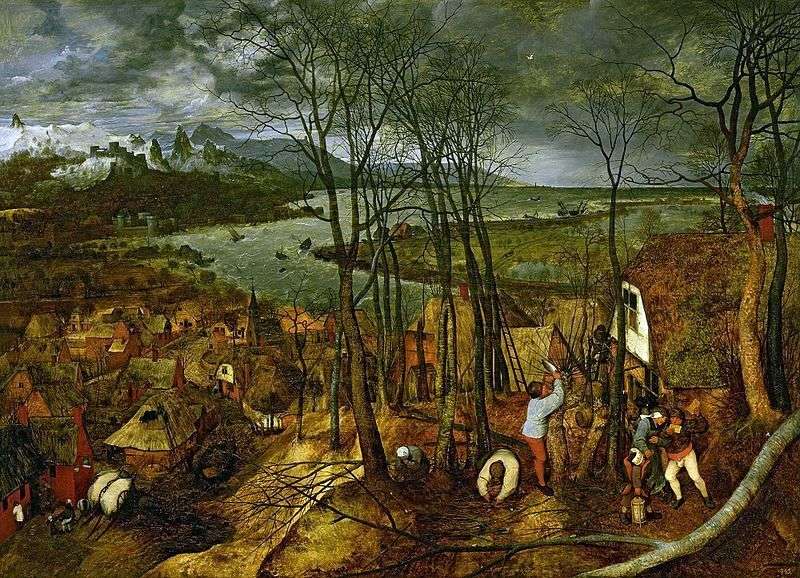
To the painters before Bruegel, nature seemed to last forever. Brueghel was the first to learn how to transfer the seasons and the associated changes in human life.
Before us is a gloomy landscape in early spring. In the foreground is a hill overgrown with trees. Obviously, there was a storm here – it was she who knocked the tree to the right, and now it seemed to sweep the top of the hill with branches.
Peasants cut naked tree branches and collect them in bundles. Here are two adults and a boy in a paper carnival hat, with a lantern in his hand. A bell hangs to his belt. The very presence of the peasants, their businesslike, confident movements enliven this gloomy terrain, remove the sensation of a severe homelessness, fill the space with human warmth.
Under the hill there is a village with an inn and a church. The houses, covered with straw or tiles, were bored, stand close together, as if guarding the warmth and comfort of each of them. Between the houses there are naked low trees. The village road is covered with untreated mud. Behind the village on the plain is a garden.
The snow lies on the peaks and in the crevices of distant mountains. Through the dark ragged nocturnal clouds the cold morning light comes through. It creates disturbing, sharp contrasts of lighted and shaded parts.
If the first place is calm after the storm, then in the distance everything is filled with excitement. Sharply curving, flows a stormy, full-flowing river. It seems that just about it will come out of the coast. The river flows into a cold, unfriendly sea. Waves beat against the dam, and along the shore formed a white foam.
From the shore people look with fear in the sea, but then, at sea, a dam appears – this is the trace of a successful struggle between man and the elements. The plain here is covered with wide roads, narrow paths. Along the coast there are solid houses.
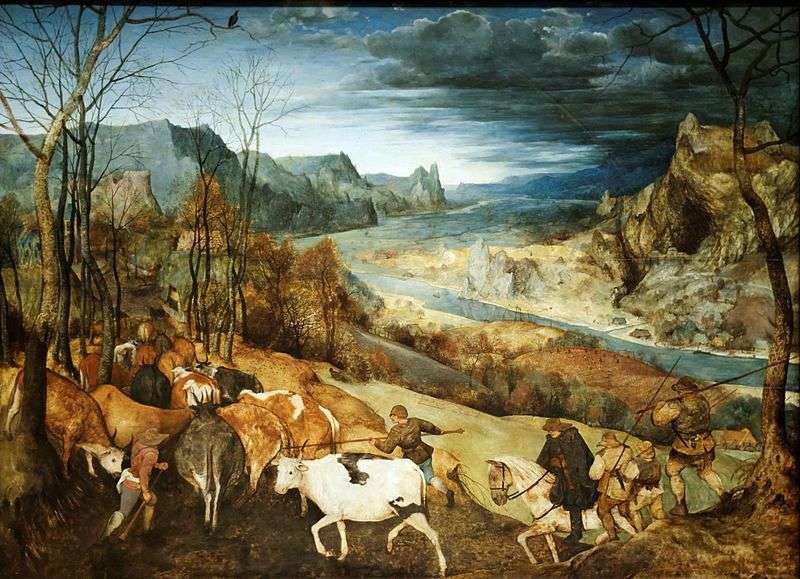 Return of the herd by Peter Brueghel
Return of the herd by Peter Brueghel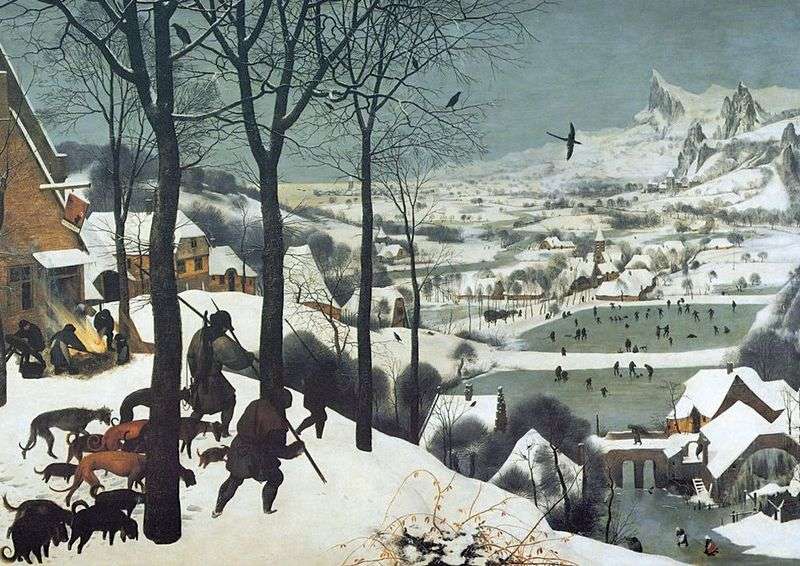 Hunters in the snow by Peter Brueghel
Hunters in the snow by Peter Brueghel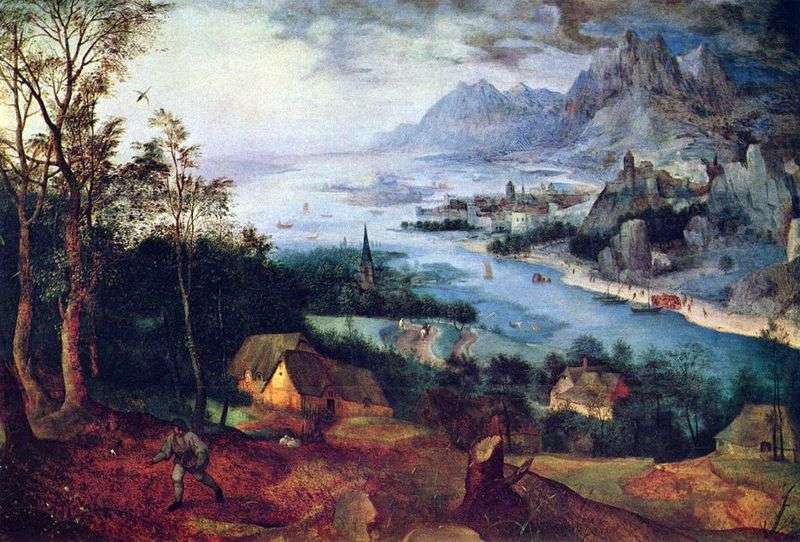 The Parable of the Sower by Peter Brueghel
The Parable of the Sower by Peter Brueghel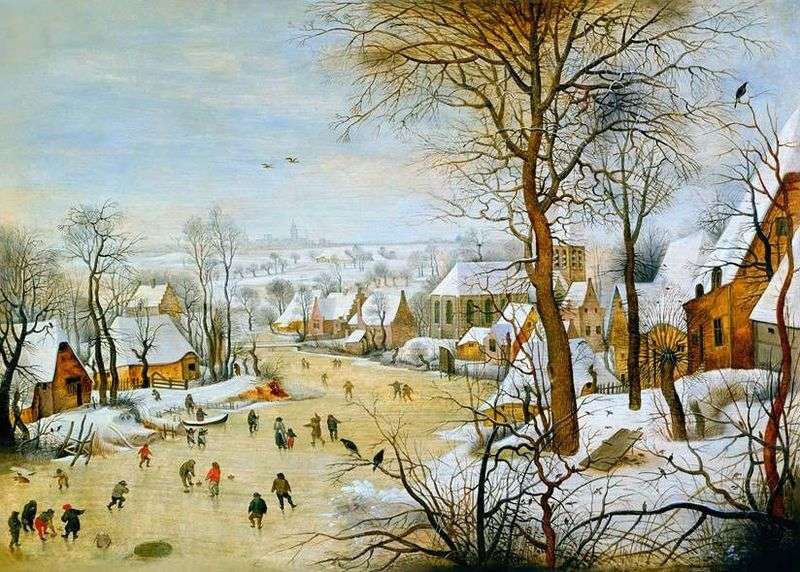 The Bird Trap by Peter Brueghel
The Bird Trap by Peter Brueghel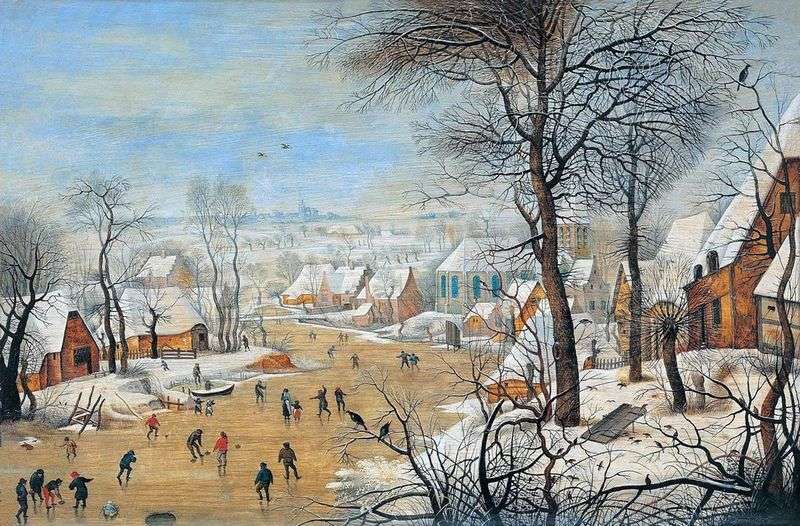 Landscape with skaters and a trap for birds by Peter Brueghel
Landscape with skaters and a trap for birds by Peter Brueghel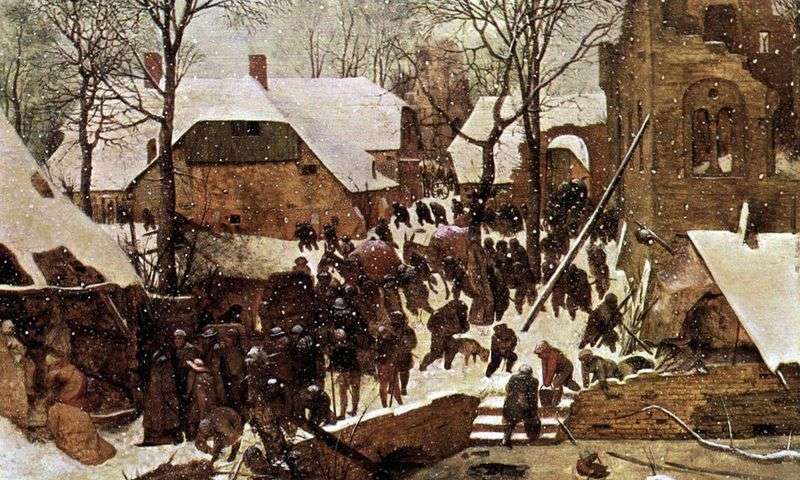 The Adoration of the Magi in the Winter Landscape by Peter Brueghel
The Adoration of the Magi in the Winter Landscape by Peter Brueghel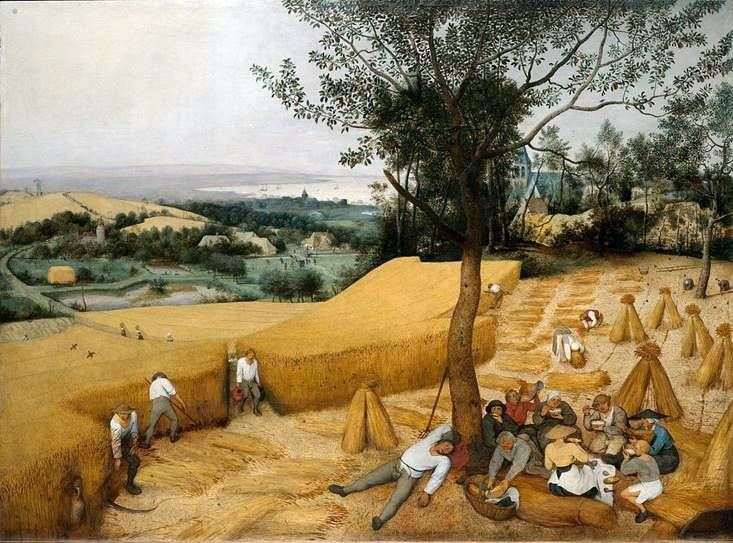 Harvest Summer by Peter Brueghel
Harvest Summer by Peter Brueghel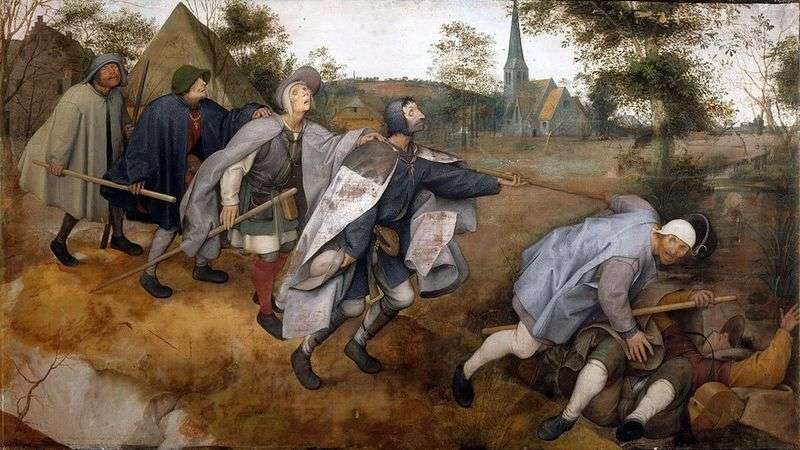 The Parable of the Blind by Peter Brueghel
The Parable of the Blind by Peter Brueghel